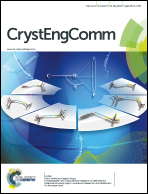Critical size for the β- to α-transformation in tin nanoparticles after lithium insertion and extraction†
Abstract
Tin nanoparticles can be transformed from the metallic β-Sn structure to the semiconducting α-Sn structure after electrochemical lithiation and delithiation at room temperature. Here, we studied the influence of the size of the crystallites on the β- to α-transformation in Sn nanoparticles. Differently sized Sn/SnOx nanoparticles were synthesized, processed in electrodes and cycled ten times in a lithium-ion cell at room temperature. X-ray diffraction (XRD) patterns before and after electrochemical lithium insertion/extraction reveal that samples with small particles contain the α-Sn structure. The critical size for this transformation is 17(4) nm. Smaller particles were transformed into the α-Sn structure while particles larger than 17 nm retain the β-Sn structure. Temperature dependent XRD measurements show that this α-Sn structure is stable up to 220 °C before its reflections disappear. The formation of the α-Sn structure at room temperature in small particles and the unexpected high transition point can be explained by the substantial contribution of the surface energy (facilitating formation of alloys not observed in the bulk), lithium impurities in the α-Sn structure and the Li2O shell which is formed during lithium insertion.


 Please wait while we load your content...
Please wait while we load your content...